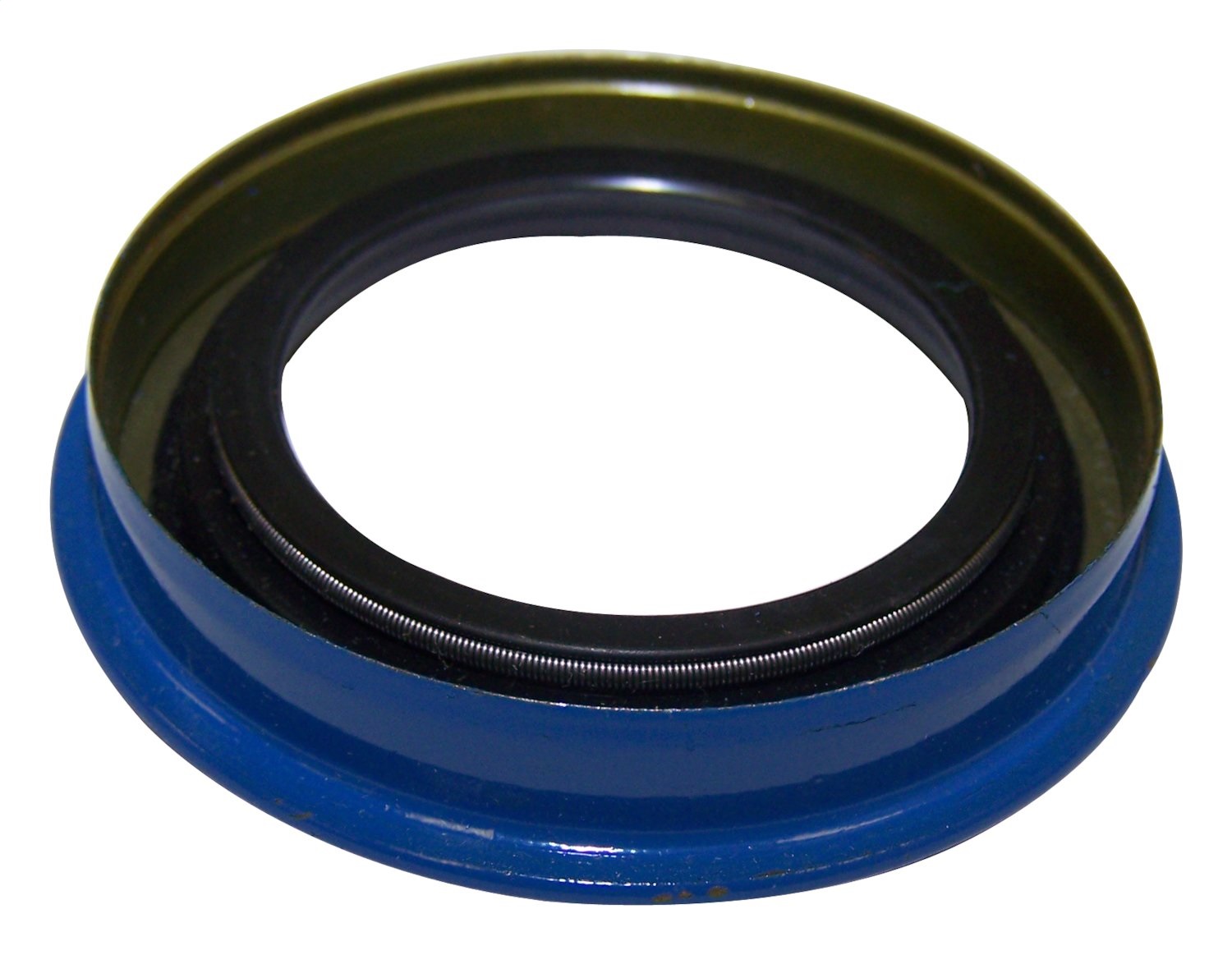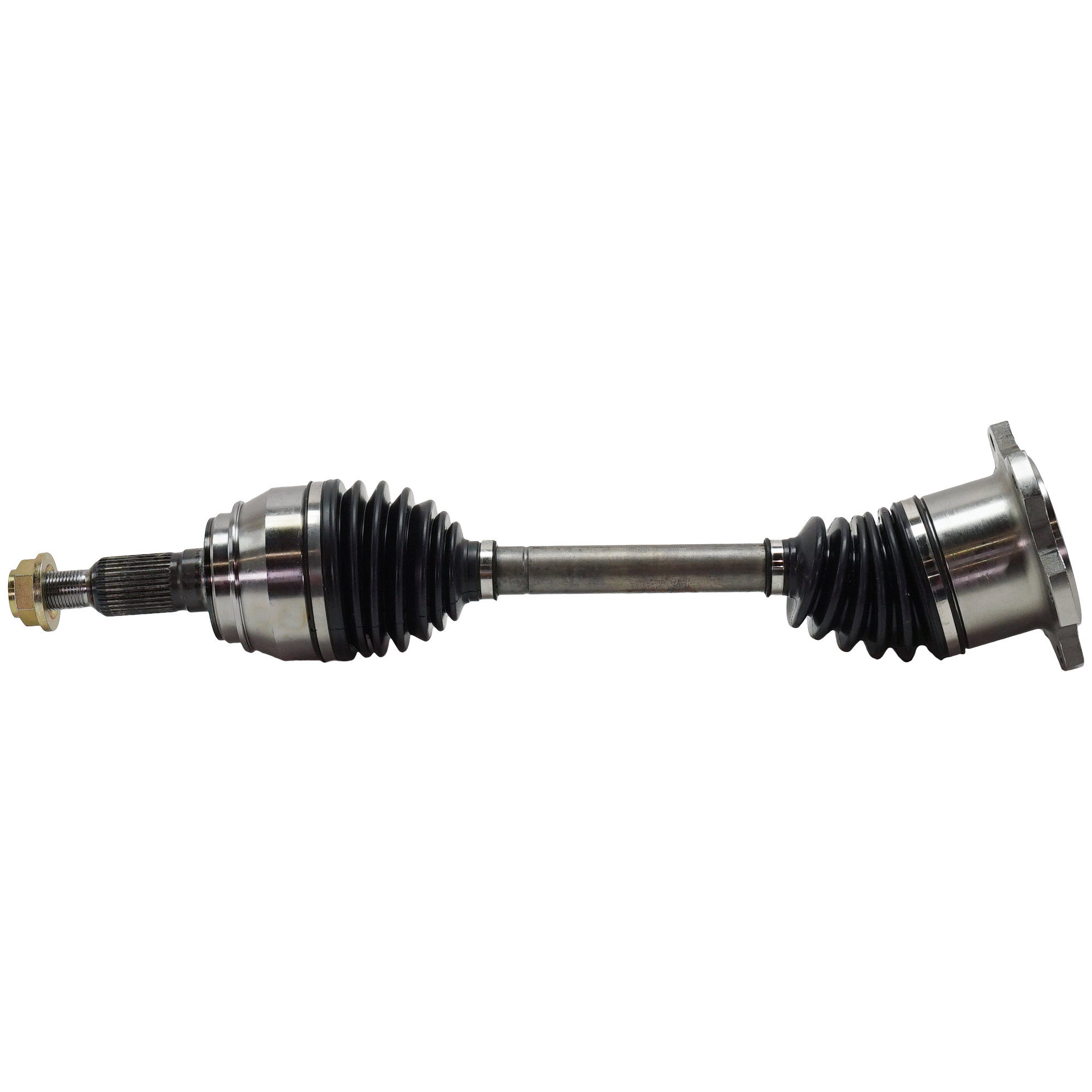What’s a “CV” axle and why do we call it that? “CV” stands for “constant velocity,” which means the axle joint can provide turning torque even though the joint may have to deliver it at a sharp angle.
Conventional driveshaft U-joints can’t perform like a CV joint can because when they’re bent sharply, they can’t smoothly deliver torque without changing speeds with every quarter-turn of the joint.

The final drive (ring and pinion) part of the driveline delivers the turning power that drives the wheels, with the CV axle being the component that connects the final drive to the wheel hubs.
Since the differential housing is filled with oil, a rubber seal is used to prevent differential oil leaks around the CV axle where it enters the differential housing.
In front-wheel-drive vehicles, CV axle shaft seals are often found where the CV axle joins the final drive part of the gearbox, while they’re found at the differential in rear-wheel-drive vehicles.

Note: On some vehicles, like late 1990s Toyotas, the differential is not oiled by the automatic transmission fluid. Instead, it has its own reservoir that must be checked by removing the fill plug on the side of the differential housing. That means the automatic transmission can be full of fluid but the differential (which uses a different, heavier oil) can run out of oil and destroy the differential.
On some vehicles, the differential is not oiled by the automatic transmission fluid. Instead, it has its own reservoir that must be checked by removing the fill plug on the side of the differential housing. That means the automatic transmission can be full of fluid but the differential (which uses a different, heavier oil) can run out of oil and destroy the differential.
–Richard McCuistian, ASE Certified Master Automobile Technician
Here are common symptoms of a bad CV axle seal:
Symptoms of a Faulty CV Axle Seal
Oil Residue Around the Seal
Oil residue around the seal could be a sign that the seal is leaking. The seal generally tears and cracks as it ages, so fluids can seep through as the seal wears out. This symptom won’t be readily apparent, since you’ll need to inspect this component from underneath the vehicle.
Puddles of Fluid
If there’s a puddle of reddish-brown fluid accumulating under your vehicle, then it’s likely either leaking oil or transmission fluid from the differential. This is a sign of a leaking CV axle seal since these are the fluids that the seal is meant to isolate.
Knocking Sound/Clicking Noises
CV axles can twist and turn since they can be connected to the front wheels, which articulate when the driver is turning. However, if the CV axle seal is worn out, then it might not be able to properly facilitate the wheels’ up-and-down movement, and you might hear clicking or popping noises as a result.

A Loose CV Axle Causing Excessive Vibrations
If there’s excessive vibration coming from underneath your vehicle, then there’s a chance it might be caused by a faulty CV axle seal. This is because the CV axle can loosen and vibrate during operation if the CV axle seal wears out. If your vehicle has excessive vibration, make sure to have it checked immediately because these vibrations can be caused by severe issues aside from a loose CV axle.
Transmission or Differential Issues
As previously mentioned, a CV axle seal can leak differential oil. Without enough transmission fluid, then the transmission or differential can develop serious issues. The transmission needs fluid to properly cool and lubricate its components, while the differential needs oil to lubricate the gears and prevent premature wear. If the CV axle leaks enough fluids, then it can cause transmission or differential issues.
Is a CV Joint Seal Different from a CV Axle Seal?
The CV Joint’s accordion boot seal keeps grease inside the CV joint, and this seal can fail as well. When this seal fails, the balls and channels in the CV joint (usually the outer joint) will begin to make noises.

Can You Replace a Faulty CV Axle Seal Yourself?
Replacing the CV axle seal is difficult because you’ll need to remove several components, including some wheel hub components and the CV axle. Separating the CV axle from the differential or the transmission can be a particularly hard process because you’re probably going to need an array of tools and a lot of elbow grease. You’ll also need to drain the transmission fluid or differential oil to prevent the oil from gushing out when the CV axle is removed.
If your vehicle shows any of the previously mentioned issues, it’s best to reach out to a trusted mechanic to diagnose the problem and assess whether or not your vehicle needs a CV axle seal replacement.
Finding a CV Axle Seal Replacement for Your Ride
It’s not a good idea to drive your vehicle if there’s an issue with one of your ride’s CV axle seals. It’s best to delay your trip and have the failed component replaced by a trusted mechanic. Here at CarParts.com, we have a wide selection of CV axle seals that you can choose from.
To ensure precise fit, input your ride’s specific details into our easy-to-use vehicle selector. All products in our catalog come with a detailed product description to help you make informed decisions.
We source our products from the most reliable brands in the industry, so you don’t have to worry about quality and functionality. But if you’re looking for a specific brand, you can toggle our filters to narrow down your search.
Shop online, and enjoy our low-price guarantee. There’s no need to go over budget to get your vehicle back on the road. Check out our catalog now and order your replacements today!
Shop this Project



Any information provided on this Website is for informational purposes only and is not intended to replace consultation with a professional mechanic. The accuracy and timeliness of the information may change from the time of publication.



































